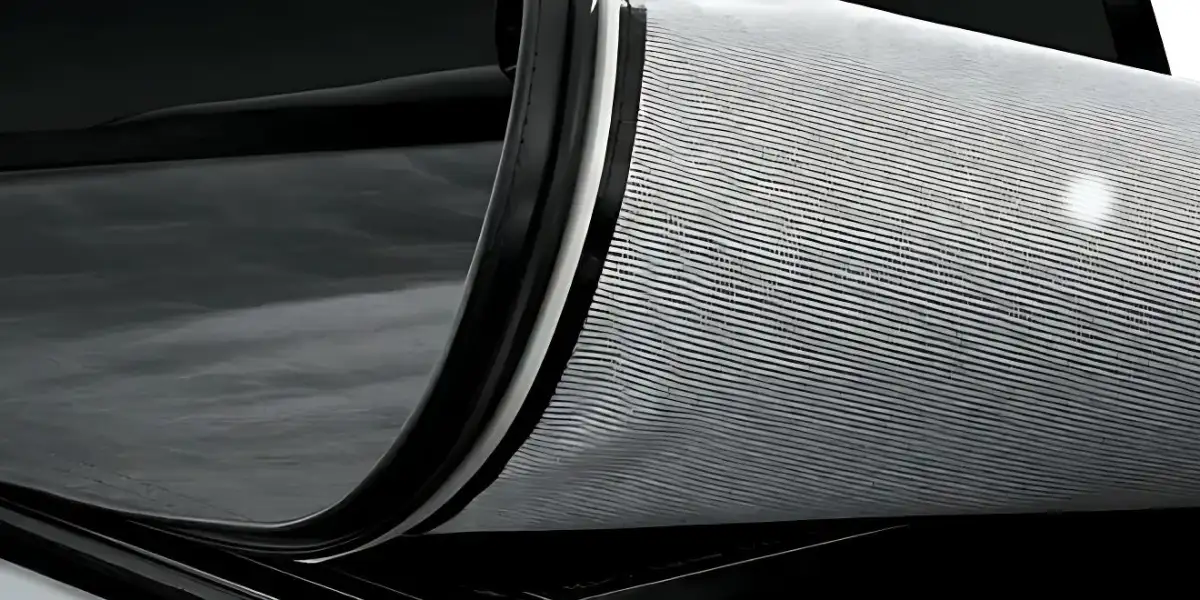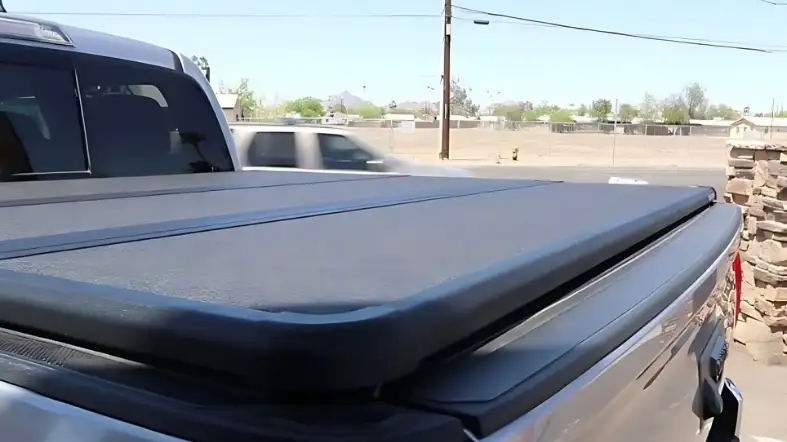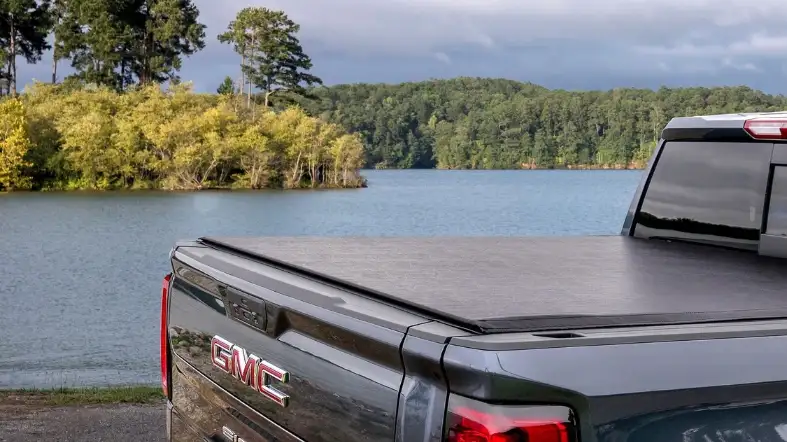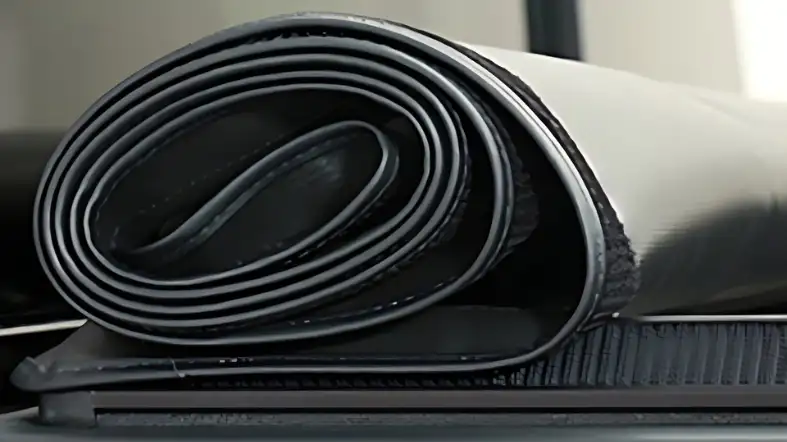Are you struggling to find the perfect tightness for your tonneau covers? Wondering how snug it should be to ensure maximum protection for your truck bed?
Look no further! In this article, we’ll dive into the question: “How tight should a tonneau cover be?”
Discover the importance of proper tonneau cover tightness, the risks of an incorrect fit, and the steps to determine the ideal tension.
Get ready to keep your cargo secure and your truck bed in top shape with the right amount of tightness. Let’s explore!

How Tight Should The Tonneau Cover Be?
The tonneau cover should be tight enough to prevent flapping or shifting while driving, ensuring a secure fit. It should maintain tension without being overly stretched or causing strain on the cover or the truck bed.
Benefits of Proper Tonneau Cover Tightness
Enhanced Protection
When your tonneau cover is properly tightened, it forms a secure barrier against various elements such as rain, snow, and dust.
This keeps your truck bed and belongings protected from potential damage or corrosion.
Improved Fuel Efficiency
A tightly fitted tonneau cover reduces wind resistance, minimizing aerodynamic drag.
This, in turn, enhances fuel efficiency by reducing the workload on your vehicle’s engine and optimizing its performance.
Prevents Flapping and Noise
With the right amount of tightness, you can eliminate flapping or shifting of the tonneau cover during travel.
This not only prevents annoying noise but also ensures a smoother and more comfortable driving experience.
Secures Cargo
Proper tonneau cover tightness keeps your cargo securely in place, preventing it from sliding or shifting while you’re on the move.
This is particularly important for fragile or valuable items that need extra protection.
Preserves Truck Bed Condition
A well-fitted tonneau cover helps maintain the integrity of your truck bed.
It shields it from scratches, dents, and other damage caused by shifting cargo, ensuring that your truck bed stays in optimal condition for years to come.
Enhanced Style
A tightly secured tonneau cover adds a sleek and streamlined look to your truck, enhancing its overall aesthetic appeal.
It provides a finished and polished appearance that elevates the visual appeal of your vehicle.
Risks of Incorrectly Tightened Tonneau Covers

When it comes to tonneau covers for trucks, it’s essential to ensure they are properly tightened and secured. Failing to do so can lead to a range of risks and potential hazards.
Wind Resistance and Drag
One of the immediate risks of an incorrectly tightened tonneau cover is increased wind resistance and drag.
When the cover is not securely fastened, it creates gaps and openings through which air can pass, resulting in increased resistance against the truck’s movement.
Water and Moisture Infiltration
Another significant risk of an incorrectly tightened tonneau cover is water and moisture infiltration into the truck bed.
If the cover is not properly sealed, rain, snow, or even splashes from puddles can find their way into the cargo area. This can cause damage to any items you’re carrying.
Theft and Unauthorized Access
A loose or incorrectly tightened tonneau cover can create an opportunity for theft and unauthorized access to your truck bed.
If the cover is not securely fastened, it becomes easier for potential thieves to open it and access your belongings.
Damage to the Tonneau Cover Itself
Improperly tightened tonneau covers are more susceptible to damage, both from external factors and the cover’s own movement.
The wind resistance and drag caused by a loose cover can subject it to constant strain, potentially leading to wear and tear over time.
Road Debris and Safety Hazards
An incorrectly tightened tonneau cover can allow road debris to enter the truck bed.
Loose items like gravel, branches, or dust may find their way through gaps and openings, posing safety hazards to both the cargo and the vehicle itself.
Flying debris can cause scratches, dents, or even shattered windows if the cargo shifts during transit.
Common Signs of a Loose or Tight Tonneau Cover
Assess the Cover’s Appearance
When determining whether your tonneau cover is loose or tight, start by assessing its appearance.
Look for any visible signs of sagging or bulging in the cover fabric or vinyl.
A loose tonneau cover may appear baggy, with excess material hanging or folding in an uneven manner.
Listen for Flapping or Whistling Noises
An audible sign of a loose tonneau cover is flapping or rattling noises while driving.
When the cover is not adequately secured, it may vibrate against the truck bed or create a flapping sound in the wind.
Additionally, a loose cover can sometimes produce whistling noises as air passes through gaps or openings.
Check for Water or Dust Intrusion
A loose tonneau cover may allow water or dust to enter the truck bed, compromising the cargo’s protection.
After rainfall or when driving on dusty roads, inspect the interior of your truck bed for any signs of moisture or dust accumulation.
Water stains, wet spots, or a layer of dust on your cargo can indicate a loose cover that is failing to seal properly.
Evaluate the Cover’s Stability in Windy Conditions
Wind can exert significant force on a tonneau cover, especially when driving at high speeds.
A loose cover may be susceptible to flapping, shifting, or even partially lifting due to wind resistance.
During windy conditions, observe the stability of your tonneau cover. If you notice excessive movement, vibrations, or lifting, it indicates a loose fit that requires adjustment.
Examine the Seals and Latches
The condition of the seals and latches can provide valuable insight into the tightness of your tonneau cover.
A loose cover may have compromised seals that do not create a watertight or dustproof barrier.
Inspect the seals along the edges of the cover and ensure they are intact, properly aligned, and free from cracks or gaps.
Seek Assistance if Uncertain
If you are uncertain about whether your tonneau cover is loose or tight, consider seeking assistance.
Consult the manufacturer’s guidelines, contact their customer support, or reach out to a knowledgeable automotive technician for expert advice.
They can provide specific insights based on your tonneau cover’s model and type.
Steps to Determine the Right Tension for Your Tonneau Cover

Step 1: Inspect the Cover’s Material and Structure
When determining the appropriate tension for your tonneau cover, start by thoroughly inspecting its material and structure. Examine the cover for any signs of wear, tear, or damage.
Look for loose or missing components, such as straps, hooks, or snaps. Ensure that the cover’s fabric or vinyl is intact without any visible rips or holes.
By carefully evaluating its condition, you can identify any areas that may require special attention during the tensioning process.
Step 2: Understand the Different Types of Tonneau Covers
There are various types of tonneau covers available, each with its own specific tensioning requirements.
Familiarize yourself with the type of cover you have to ensure that you apply the correct tensioning method.
Common types include roll-up covers, folding covers, retractable covers, and hinged covers.
By understanding the nuances of your specific tonneau cover type, you can proceed with the tensioning process more effectively.
Step 3: Refer to the Manufacturer’s Instructions
Manufacturers often provide detailed instructions on how to properly tension their tonneau covers.
Locate the owner’s manual or any accompanying literature that came with your cover.
Pay close attention to the manufacturer’s guidelines for tension adjustment, as they may vary depending on the specific brand and model.
Following these instructions will help you achieve optimal tension and ensure the proper functionality of your tonneau cover.
Step 4: Start with a Neutral Position
Before making any tension adjustments, it is crucial to start with a neutral position.
This means ensuring that the cover is fully closed and aligned properly on your truck bed.
Check that the cover is centered and latched securely, providing a stable base for the tensioning process.
Starting from this neutral position will allow you to accurately gauge the required tension adjustments.
Step 5: Make Incremental Adjustments
To determine the right tension, it is advisable to make incremental adjustments rather than large, sudden changes.
Begin by slightly increasing the tension and observe how the cover responds.
Check for any signs of excessive sagging or bulging in the fabric. Gradually tighten or loosen the tension as needed until you achieve the desired result.
Remember that achieving the optimal tension may require several iterations of adjustment and evaluation.
Step 6: Check for Proper Functionality
While adjusting the tension, periodically check for the proper functionality of the tonneau cover.
Ensure that the cover opens and closes smoothly without any obstructions or difficulties.
Test the latching mechanism to verify that it securely fastens the cover in place.
Additionally, confirm that the cover provides sufficient protection against the elements, such as rain or dust, by inspecting the seals and edges for any gaps or leaks.
Step 7: Seek Professional Assistance if Needed
If you encounter challenges or uncertainties during the tensioning process, it is recommended to seek professional assistance.
Contact the manufacturer’s customer support or consult a reputable automotive technician who can repair tonneau covers.
They can offer expert advice, troubleshoot any issues, and ensure your tonneau cover is correctly tensioned for optimal performance.
Factors Influencing Tonneau Cover Tightness

Consider the Cover’s Material and Construction
When determining the ideal tightness for your tonneau cover, take into account its material and construction.
Assess the cover’s durability and strength by examining its fabric or vinyl for any signs of wear, tear, or damage.
Look for loose or missing components, such as straps, hooks, or snaps, as they can affect the cover’s ability to maintain proper tension.
Evaluate Environmental Conditions
Environmental conditions play a significant role in determining the appropriate tightness for your tonneau cover.
Consider the climate in which you primarily use your truck. In areas with high wind speeds, you may need to tighten the cover more to prevent flapping and potential damage.
Understand Tonneau Cover Type and Design
Different types and designs of tonneau covers have varying tightness requirements.
Familiarize yourself with the specific type of cover you own, such as roll-up, folding, retractable, or hinged.
Each type may have unique features and mechanisms that affect how tight the cover should be.
Consider the cover’s design elements, to ensure you understand how they influence the cover’s overall tightness.
Refer to Manufacturer’s Guidelines
To achieve the appropriate tightness for your tonneau cover, consult the manufacturer’s guidelines and instructions.
Manufacturers often provide specific recommendations regarding tension adjustment.
These guidelines can include information about the optimal tension level, recommended tightening methods, and any limitations or precautions to follow.
Observe Cover Performance
As you adjust the tightness of your tonneau cover, closely observe its performance.
Check for any signs of excessive sagging, flapping, or bulging in the fabric while driving at various speeds.
An adequately tightened cover should remain securely in place, providing a streamlined appearance and minimizing noise during travel.
Continuously evaluate the cover’s performance to gauge whether further adjustments are needed to achieve the desired tightness.
Seek Professional Advice if Necessary
If you encounter challenges or uncertainties when determining the ideal tightness for your tonneau cover, consider seeking professional advice.
Reach out to the manufacturer’s customer support or consult an experienced automotive technician who specializes in tonneau covers.
They can provide valuable insights, troubleshoot any issues, and offer expert guidance tailored to your specific cover and truck model.
Professional assistance ensures that you achieve the optimal tightness for your tonneau cover.
FAQs
What Can Cause A Tonneau Cover To Become Loose?
Several factors can cause a tonneau cover to become loose, including temperature changes, improper installation, wear and tear, or adjustments made while accessing the truck bed.
How Can I Tighten A Loose Tonneau Cover?
To tighten a loose tonneau cover, you can adjust the tensioning mechanisms provided by the manufacturer, such as clamps, straps, or latches.
Follow the instructions specific to your tonneau cover model.
Can I Overtighten A Tonneau Cover?
Yes, overtightening a tonneau cover can damage the cover or the truck bed.
It’s important to follow the manufacturer’s guidelines and not exert excessive force when tightening the cover.
Why Is It Important To Have A Tight Tonneau Cover?
A tight tonneau cover ensures a secure and weatherproof seal, preventing water, dust, and debris from entering the truck bed.
It also reduces wind resistance, improving fuel efficiency.
How Often Should I Check The Tightness Of My Tonneau Cover?
It’s a good practice to periodically check the tightness of your tonneau cover, especially after long drives or exposure to extreme weather conditions.
Regular inspections can help identify and address any looseness early on.
Can I Adjust The Tightness Of A Tonneau Cover On My Own?
Yes, most tonneau covers come with adjustable features that allow you to tighten or loosen them as needed.
Refer to the manufacturer’s instructions or consult a professional if you are unsure about making adjustments.
Final Words
Ensure your tonneau cover fits snugly, striking the perfect balance between security and flexibility.
Avoid excessive tightness that could damage the cover or your truck bed. Regularly check the tightness, especially after long drives or extreme weather conditions, and make necessary adjustments for optimal performance.
Enjoy a secure and weatherproof truck bed experience with a properly tightened tonneau cover.
